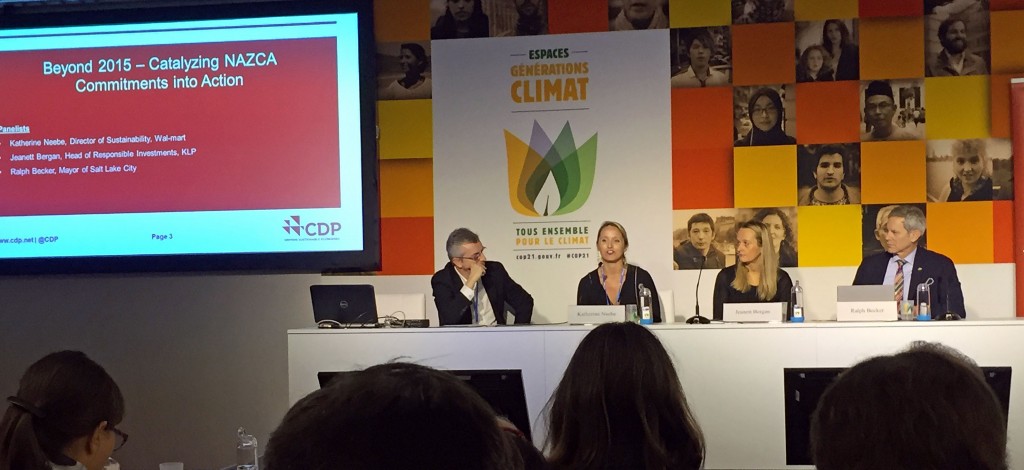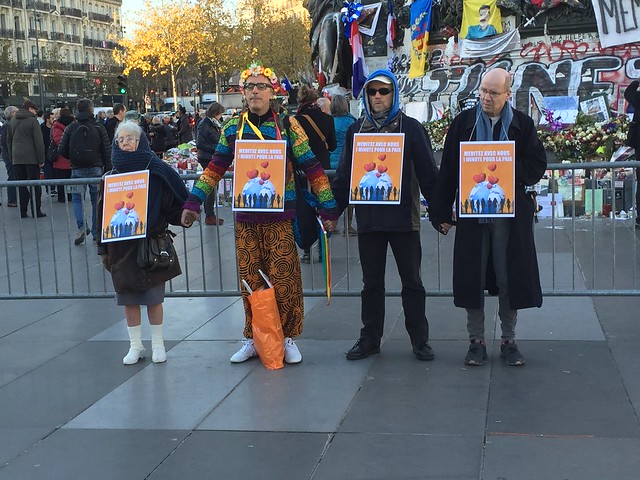
Demonstrators gather at the entrance to the Wayne National Forest in Nelsonville, Ohio, on December 1, 2016, to protest a BLM auction of oil and gas leases on public land in the forest. Photo courtesy of Kimberly Dawley.
Over the objections of the Sierra Club and other environmental organizations, the Bureau of Land management on December 13 auctioned off leases for parcels in Wayne National Forest to oil and gas corporations for fracking.

Parcels in the Marietta unit of Wayne National Forest marked off for auction to oil and gas corporations for fracking.
More than 750 acres across 17 parcels in the forest’s Marietta unit were sold to 22 oil and gas companies for a total of about $1.7 million. Winning bids ranged from $2 per acre to $5,806.12 per acre.
Originally the BLM had posted 31 parcels in Wayne National Forest for lease, but pulled 17 at the last minute, finding that they already had existing oil and gas leases. A few of the pulled parcels even have operational wells.
Discussion of fracking in Wayne National Forest goes back to 2011, when the BLM proposed leasing parcels of the forest to oil and gas operations. At that time the Sierra Club joined with other groups such as Athens County Fracking Action Network and Buckeye Forest Council to successfully lobby Wayne Forest supervisor Anne Carey to withdraw consent for fracking.
But in late 2015 the BLM brought back plans to frack Wayne National Forest. The agency held information sessions near each of the forest’s three main units in Athens, Marietta, and Ironton. In Athens 200 citizens showed up to oppose fracking.
The sale came after BLM issued a draft Environmental Assessment, a “fast-track” assessment of the risk of oil and gas drilling in the Marietta unit, along with an unsigned Finding of No Significant Impact in April 2016. Their proposal was to lease fracking rights to 40,000 acres, including 18,000 acres in the first auction. More than 50 oil companies expressed interest.
Objections
In response, the Sierra Club with Center for Biological Diversity, Friends of the Earth, and Ohio Environmental Council submitted a 78-page letter demanding a full Environmental Impact Statement, a much more comprehensive examination of environmental risks.

Activists rallied against fracking in Wayne National Forest outside Sen. Rob Portman’s office in Columbus on November 3, 2016.
The groups said the draft assessment had not taken into account that:
- Fracking poses a risk to water quality through contamination of rivers, streams, and water tables from fracking fluid and disposal wells.
- Fracking harms air quality through pollutants such as nitrogen oxides, sulfur dioxide, particulate matter, carbon monoxide, and ozone.
- Methane from fracking significantly increases greenhouse gas emissions, adding to climate change that increases the chances of extreme weather events, sea level rise, and impacts to infrastructure.
- Fracking poses significant human health and safety risks such as increased risk of cancer, birth defects, and heart attacks.
- Fracking poses a risk to wildlife species such as the northern long-eared bat and threatens loss of wildlife habitats.
BLM must end all new fossil fuel leasing and fracking on public lands in order to limit greenhouse gas emissions and keep fossil fuels in the ground required to meet the Paris Agreement on climate change, the environmental group’s letter said.

Activists rallied against fracking in Wayne National Forest outside Sen. Rob Portman’s office in Columbus on November 3, 2016.
Sierra Club also worked with Center for Biological Diversity and Ohio Environmental Council to ask the U.S. Forest Service to intervene to stop the sale of Wayne National Forest for fracking. Under federal rules, BLM oversees oil and gas operations, but the Forest Service must consent to these activities and can withdraw consent at any time.
“Public lands are for the people, not for the benefit of Big Oil and Gas,” Lena Moffitt, director of the Sierra Club’s Beyond Dirty Fuels campaign, said in a statement last month. “Drilling for oil and gas means more fracking, and fracking means poisoning our air and water, and threatening the health of our communities and our environment. At a time when clean energy like solar and wind is proving to be safest, healthiest and most cost-effective way to power our country, it’s high time we recognized that we need to leave dirty fuels like coal, oil and gas in the ground.”
Unfortunately, the BLM did not take concerns raised by Sierra Club and other groups into account and declined to do an in-depth Environmental Impact Statement. In October the BLM published its final Environmental Assessment and Finding of No Significant Impact, setting the auction date for December 13.
Online auction
The auction was conducted entirely online. To bid, interested parties had to sign up through the auction portal, declare they intended to use the land for oil and gas exploration, and provide their bank account information to receive a maximum bid allowance.

Activists made plans for how to counter fracking in Wayne National Forest at a meeting on October 27, 2016.
Several environmental groups ran campaigns against fracking in Wayne National Forest. More than 4,000 people sent letters to the U.S. Forest Service through an action alert posted by Ohio Sierra Club. An Action Sprout petition posted by Ohio Environmental Council got over 8,000 signatures, and a Change.org petition posted by Athens County Frack Action Network netted over 99,000 signatures.
In addition, protests were organized at the offices of Sens. Rob Portman and Sherrod Brown, as well as at U.S. Forest Service offices in the Athens unit.
Coincidentally, also on December 13, the Environmental Protection Agency released its final report showing that fracking has indeed contaminated drinking water. This was a change from the draft report that found such contamination only in isolated cases.
The EPA updated the report after a virtually unanimous outcry from environmental protection organizations across the country as well as its own Science Advisory Board.

Activists rallied against fracking in Wayne National Forest outside Sen. Rob Portman’s office in Columbus on November 3, 2016.
BLM has 60 days to issue the fracking leases sold on December 13. Companies then must apply for a permit to drill, a process that takes at least six months.
Parties interested in opposing fracking in Wayne National Forest will meet on Thursday, January 26, at 6 p.m. in Room 100 of the Northwood-High Building, 2231 N. High St., Columbus, OH 43201, to discuss options following the December auction.
This story appeared in the January 2017 newsletter for Sierra Club Central Ohio Group.









